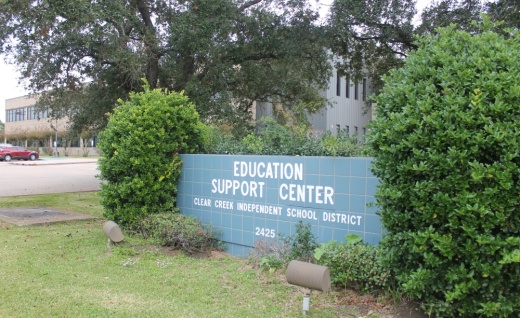Clear Creek ISD will not offer Clear Connections or any other established virtual academy for remote learners during the 2021-22 school year due to a combination of low interest and funding-related questions.
Some options for asynchronous education will be available to secondary students in 2021-22 through Clear Access courses, which are developed by the district. This course modality has been available to students since 2008, but it is being converted from a summertime, fee-based program to a no-cost program taking place during the school day.
High school students can choose next school year to take a Clear Access course during the first period of the day, free of charge, and report to campus for their second period. This option supports the flexible scheduling and online course offering recommendations given to district leaders by the CCISD School Start Time Committee in fall 2019, Assistant Superintendent of Secondary Education Karen Engle said.
Trustee and board Secretary Laura DuPont noted the current Clear Access offerings, available in six secondary subject areas, cater mostly to upper-level high school students.
“I’m just wondering if there are possibilities to increase the number of classes that even would be available to our students,” DuPont said, asking district leaders to keep course levels in mind with future offerings. “We’re still potentially not giving the opportunity to freshmen and sophomores relative to that first-period class.”
More Clear Access offerings will be developed in 2021-22 to be offered the following academic year, Engle said at the meeting. Previous Clear Access courses did not count toward a student’s grade point average since they were taken outside of school during the summer, but these courses offered in 2021-22 and beyond will be, she said.
Any additional costs associated with Clear Access programming, including staffing, would be minimal and will be absorbed by the district, Engle said. The district will now shift gears, leaving behind the intense focus on Clear Connections and instead communicating as much as possible with the community about the Clear Access offerings.
Challenges for virtual academy
The board of trustees discussed the rationale behind the decision to eliminate Clear Connections at its June 14 workshop. Engle and Assistant Superintendent of Elementary Education Holly Hughes gave context about the state of virtual schooling in Texas and provided data concerning CCISD’s expenditures as they relate to virtual learners.
House Bill 1468, if it had passed, would have expanded online learning options for Texas school districts by allowing for average daily attendance funding through a district’s virtual platform, Hughes said. The bill addressed education for grades three through 12; the Legislature closed without its passage, meaning individual districts would have to procure funding for virtual education.
Of CCISD’s 119 third-, fourth- and fifth-graders who requested to learn virtually, 29 are considered medically high-risk, according to data Hughes presented at the workshop. It would cost around $255,000 to provide services for these high-risk students next school year, Hughes said.
About twice that number of intermediate and high school students put in requests to learn virtually, Engle said, and it would cost approximately $1.53 million to provide the appropriate staffing for both face-to-face and asynchronous secondary learners in 2021-22.
Interest for virtual learning is minimal, at just under 400 of the district’s more than 42,000 students, and the cost per student would be high and there is now no guarantee of average daily attendance funding from the state. For these reasons, the Clear Connections virtual academy will not be an option for students in 2021-22, district leaders said June 14.
CCISD students with a diagnosed condition that puts them at high risk for severe illness will have access to academic services for the homebound through district channels, Hughes said. Students considered at risk in any other way will be monitored individually but not provided with an entire virtual platform like Clear Connections, she said.
Districts across the state were increasingly moving toward a similar model, providing homebound services to at-risk students and eliminating an established virtual academy, even as legislation like HB 1468 moved forward, CCISD Superintendent Eric Williams said at the meeting.
Homebound students typically have four hours of face-to-face instruction a week, so much of their learning is asynchronously done through platforms such as ItsLearning, Hughes said. The district also accepts credits earned by students through the Texas Virtual School Network, which is provided to districts by the Texas Education Agency.
Dava West, the district’s director of guidance and counseling, said the virtual school network is used rarely, but it comes into play if a student needs to finish a course sequence and the relevant courses are no longer offered at their specific campus. The district looked into becoming a TVSN provider, which would allow students from any district to pay to take CCISD’s virtual courses, West said; district leaders did not indicate whether further action would be taken.





